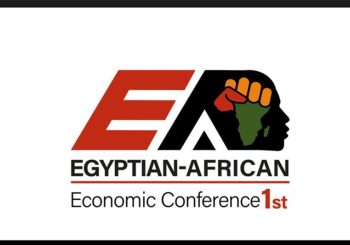Over the years, climate change has caused an increase in the frequency and intensity of extreme weather events. It has also been bringing about gradual changes in landscapes and ecosystems such as desertification, drought, and sea level rise that are detrimental, and in some cases existential threats, to certain countries.
With time, there has been growing momentum and louder calls, particularly by developing countries, to establish a fund which helps countries suffering from the negative effects of climate change to recover when adaptation and mitigation fail. This idea, however, was not well-received by developed countries, as the onus would naturally fall on them to provide financing.
As climate awareness and public pressure increased, and as the negative effects of climate change became more present, developed countries ultimately relented.
The decision to establish a ‘loss and damage’ fund was therefore the major highlight of COP27, the United Nations’ prime annual climate conference, in Sharm El-Sheikh. The transitional committee handling the daunting task of making recommendations for the fund’s operation had already met once in Luxor in late March, and will meet again tomorrow, 25 May, for two days in Bonn, Germany.
What is Loss and Damage?
‘Loss and damage’ refers to the negative sudden or gradual impacts of climate change that exceed the adaptation limit, which is a country’s degree of preparation for such negative climate impacts. Loss and damage financing aims to address these negative impacts after they have occurred.
There are two types of losses and damages this fund aims to cover: economic and non-economic. The former is quantifiable, like damage to infrastructure which can be funded and rebuilt, while the latter is losses to culture, society, and things of personal and communal value that are harder to put a price tag on.
The transitional committee has a monumental task ahead of it, having to figure out ways to address pivotal questions such as the ones laid out below. The work done in this meeting and those that follow will be crucial to shaping how a loss and damage fund will operate.
Below are a few of the relevant questions which the committee will have to answer to lay out the fund’s operationalization.
1. Who is going to pay?
The first question that comes to mind is one of the most defining. There is a consensus that developed countries must bear this burden, but the definition of these terms is contentious.
Western states want to expand the financing pool to include countries with large economies such as China, or those with high GDP per capita rates such as South Korea and Gulf countries like Qatar and Saudi Arabia. Gulf Cooperation Council (GCC) countries have some of the highest per capita gross domestic product (GDP) and carbon dioxide emission rates in the world, and per capita cumulative emissions.
What is clear is that developed countries will attempt to expand the number of contributing states to lessen the burden on themselves, while countries in the gray area between ‘developed’ and ‘developing’, which are being called upon to contribute, will be reluctant to take on any new obligations.
A related question that arises from this issue is the role of non-state entities in raising funds, such as multilateral development banks and the private sector.
2. How much must be paid?
This is as difficult a question to settle as the first one, because it is very complicated, if not impossible, to determine a ‘fair’ level of financing that can compensate for an increasing and indeterminate landscape of loss and damage caused by climate change. Under conditions of failure to limit global warming and mitigate the effects of climate change, the whole world is going to need financing to address loss and damage.
To begin to address this task, states narrowed — see Article 2 of Decision 2/CP.27 — the target of the loss and damage fund to “developing countries that are particularly vulnerable.”
Of note is the identification of “particularly vulnerable” developing countries as the target, which opens the door to limit the scope of loss and damage financing to only those countries suffering an imminent existential threat due to climate change, such as Pacific Small Island States facing submersion due to sea level rise.
The Vulnerable Group of Twenty (V20), now boasting 58 members and a combined population of 1.5 billion people, provides some criteria to look for in determining who is “particularly vulnerable.”
3. How will pay be divided?
This question deals with how pay will be divided between contributors once they are recognized as such. If the fund is left to voluntary contributions, then countries will give as much as they are willing — or pressured — to give. However, if there is some obligation, whether formal or informal, then there must be a way to decide who pays how much.
Each method favors some countries over others; looking at current emissions places the burden on populous countries, while current emissions per capita shifts some of that burden onto smaller states that are highly polluting relative to their size, such as Gulf countries.
Contributions could also be calculated by looking at cumulative emissions per population—historical emissions divided by the current populations—makes historical polluters with low current populations, like Canada, pay more.
On the other hand, there are cumulative emissions per capita, which are historical emissions taken year by year and divided by the population of that specific year, then added up. Using this metric increases the obligation of historical polluters with high per capita emissions in the past who might now have lower per capita emission rates. These countries, such as New Zealand, have already reaped the fruits of polluting development.
Another factor is the ability to pay, which can be determined through indicators such as GDP, which again places the burden on larger countries, or GDP per capita, which shifts some of the burden onto smaller, rich states as size becomes irrelevant. There are arguments for all of these approaches, and a fair and effective system will likely take all or most of them into account when determining contributions.
4. What is eligible for loss and damage financing?
The question of who might be eligible for loss and damage financing has already been discussed, and it has been pointed out that “particularly vulnerable” countries, such as small island states, will be first in line.
However, there is still the question of what exactly will be eligible as loss and damage? Will it only be imminent existential threats, at least at first? Will extreme weather events that previously occurred fairly frequently, but have recently increased in intensity due to climate change, be eligible for financing?
In other words, how do we differentiate between ‘business as usual’ extreme weather events and those that have occurred due to climate change? And would all types of negative climate impacts be covered by the loss and damage fund, including drought, desertification, and changing patterns of rain and weather which affect agriculture?
These are all questions that have to be addressed by the transitional committee, at COP28, or in practice.
5. Loans or grants?
A question which must not be overlooked is whether loss and damage financing will come in the form of loans that must be paid back or financing that is made with no expectation of repayment.
This is important because most climate finance currently takes the form of loans, which increase vulnerable and developing countries’ indebtedness as well as the economic burden on states likely already struggling to create the conditions for a thriving economy due to structural weaknesses. These weaknesses range from colonial or neo-colonial legacies by the same group of countries providing the loans, bad political or economic policy, or various other factors.
Even at low or zero interest, loans are simply not the ideal method for economically developing countries to manage climate mitigation, adaptation, or loss and damage — especially when these countries are disproportionately suffering the effects of a crisis they did little to bring about.
However, it is unrealistic to expect all or even the vast majority of loss and damage financing to come in the form of grants. In general, there are many challenges facing the loss and damage fund before it can become all that it is needed to be. Though lobbying by civil society and developing countries had already gone a long way, having secured the agreement to establish a loss and damage fund in the first place. It is therefore not unimaginable that continued pressure can bring more progress.
6. Where does Egypt come into this?
As the COP27 host and presidency, Egypt played a critical role in bringing about a decision on a loss and damage fund. Moreover, the first meeting of the transitional committee was held in Luxor.
From here, Egypt has the opportunity to take advantage of this momentum, and its emergence as an upholder of the interests of developing states when it comes to climate change, to use its diplomatic prowess and push to see through the establishment of an effective, fair, and well-financed loss and damage fund.







Comments (5)
[…] post Making Nations Pay for Climate Change: 6 Questions on the Loss and Damage Fund first appeared on Egyptian […]
[…] Source link […]